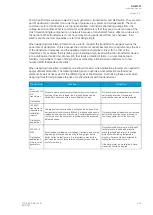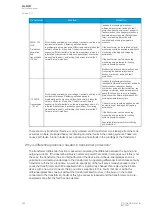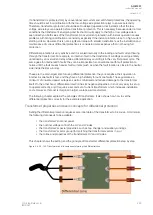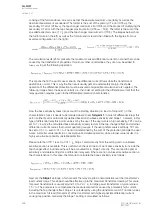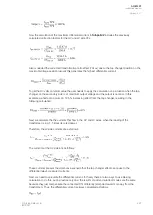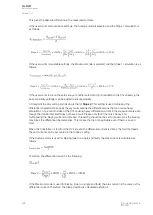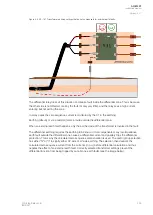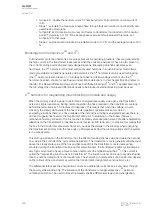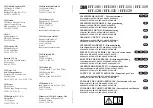
4) Possible auxiliary transformer or auxiliary winding, currents not measured separately (AUTE)
In this example a 50 kVA auxiliary transformer is connected to the LV side output before the CTs, and
this needs to be noted in the calculations. The same is true when the transformer itself is connected to
auxiliary power output and those currents are not measured. The auxiliary power output's effect can be
calculated by calculating the percentage of the auxiliary transformer/winding VA in relation to the
transformer nominal VA (see formula below; assumes the auxiliary load to be nominal):
5) Transformer core magnetizing current (TME)
Transformer magnetizing current is the current which flows in the primary winding. Since it is running
only in the primary side, this needs to be taken into account in the settings calculations. The
approximate magnetizing current value can be calculated according to the following formula:
When the primary inductance is known, the magnetizing current value is compared to the HV side's
nominal current and the resulting percentage is directly the TME value. If the transformer's primary
inductance is unknown, one can use a conservative estimate of 3 % as the TME value.
6) Safety margin (SME)
Conservative settings typically use a safety margin up to 5 %.
7) Tap changer on load side (TCE)
This example transformer has a tap changer with the rating of +/- 5 × 2.5 %. This means that the
secondary side windings can be set +/- 5 × 2.5 % from the nominal center position, causing a
maximum deviation of 5 × 2.5 % from the nominal conditions. Therefore the TCE is 12.5 % in this case.
Please note that the tap position is not always in the nominal center position: check the application and
calculate the maximum effect to the worst side.
Generally the tap changer means that the transformer transformation ratio can be adjusted in order to
receive the nominal voltage more accurately to the secondary side of the transformer. There a multiple
reasons for voltage variations, e.g. heavy or light loading in the HV side. In practice this means that if
the secondary side needs more or less voltage, the secondary side uses more or less winding rounds.
This causes a difference in the nominal current condition, which can be noticed as a differential current
in the relay. Usually tap changer positions are presented as deviation steps for the secondary voltage
to both positive and negative direction from the center (see the second image below).
A
AQ
Q-M257
-M257
Instruction manual
Version: 2.07
294
© Arcteq Relays Ltd
IM00021
Summary of Contents for AQ-M257
Page 1: ...AQ M257 Motor protection IED Instruction manual...
Page 2: ......




